
With a win rate of 77% spanning 118 years and 612 Test matches, the All Blacks are indisputably one of the most successful sports teams of all time.
New Zealand’s women, the six-time World Cup winning Black Ferns, have a similarly fearsome reputation.
So what sets the Kiwis apart? How do they train to be the best and beat the best? And what can you learn from the greatest rugby union team on the planet to upgrade your own training?
We asked Nic “Gilly” Gill, strength and conditioning coach of the All Blacks, to share some of his trade secrets at an event organised by Wattbike, the indoor bike used by the All Blacks.
All Blacks Training Tips

Work smarter, not harder
Gill has been responsible for getting World Rugby Player of the Year winners Richie McCaw, Dan Carter, Kieran Read, Brodie Retallick and Beauden Barrett and their black-clad colleagues in peak physical shape since 2008.
“My brief is always to get the fittest athletes out on the park every Saturday,” says Gill. “To do that we have to take a few risks but it’s about working smarter, not harder.” One of the All Blacks’ greatest weapons in achieving this, he tells us, is the Wattbike.
“When I started out, the players’ ability to tolerate training wasn’t as high as I needed it to be,” he says. “I had to find a way to get the athletes fitter without breaking them. When you’re 120kg you can’t just keep running.” Enter the Wattbike. “Now I can hammer the players on them with brutal interval sprints knowing they won’t break.”
Sign up for workout ideas, training advice, reviews of the latest gear and more.
Follow the 80/20 rule
These Wattbike sessions are undoubtedly punishing, but the All Blacks use them sparingly – at most once a week. “My rule of thumb is 80/20,” Gill explains. “That’s 80% at low intensity, in heart rate zone one or two, and 20% at high intensity, which is zone five and six.”
That means on a typical training day, the All Blacks might work hard for 30-40 minutes, then ease off for three or four hours, before stepping it up again. For us, that means limiting those genuinely all-out efforts to 10-12 minutes in a typical hour-long workout. Or just one session a week rather than thrashing your body and central nervous system with back-to-back HIIT workouts.
Use it or you’ll lose it
The All Blacks set out with the intention to improve every day, and to work on the key physical attributes they need in their sport every week, because if you don’t use it, Gill says, you lose it.
“The human body is pretty amazing,” he says. “Anything it doesn’t need it will model out of the equation. You need to keep training the things you need, like strength, power and stamina, consistently to keep progressing.”
Do the mahi to get the tricks
Gill tells us that there’s a Maori expression – “do the mahi to get the tricks” – that’s become popular among the All Blacks. Mahi means work and it’s a principle the players live by.
“You have to put the work in to reap the rewards,” says Gill. “You have to earn the finer things in life. There are no shortcuts, no quick fixes.” Once you switch your mindset to embrace the journey, you’ll start to relish rather than resent your workout, knowing the tricks will be worth it in the end.
The All Blacks’ Upper-Body Hypertrophy Workout
With these principles in mind, here’s a workout the All Blacks use to build upper-body size and strength throughout the season.
The free-weight session begins with mobility and stretching drills for the neck and shoulders, followed by activation work. The hard work then starts with a strength block, continues with a bodybuilding block and finishes with an isometric hold.
“I call it Collision Armour,” Gill explains. “It’s all about developing strong shoulders, chest and back muscles – that’s where most collisions occur in rugby union. We need the players to be strong and muscular to absorb those impacts, yet mobile through their upper body to catch and pass.”
Preparation
1A Trap stretch
Time 30-45sec Rest 15sec
Slowly shrug your shoulders towards your ears, then relax them down to release any tension through your upper back and neck muscles.
1B Banded lat stretch
Time 30-45sec Rest 15sec
Hold a long loop resistance band at chest height with your arms straight. Squeeze your upper-back muscles as you pull the band apart, then bring your hands back to touch in front.
1C Child’s pose
Time 30-45sec Rest 15sec
On your hands and knees, spread your knees wide, sit your glutes back on your heels and stretch your hands forwards on the floor to open up space around your chest, shoulders and lower back.
Activation
2A Prone flye
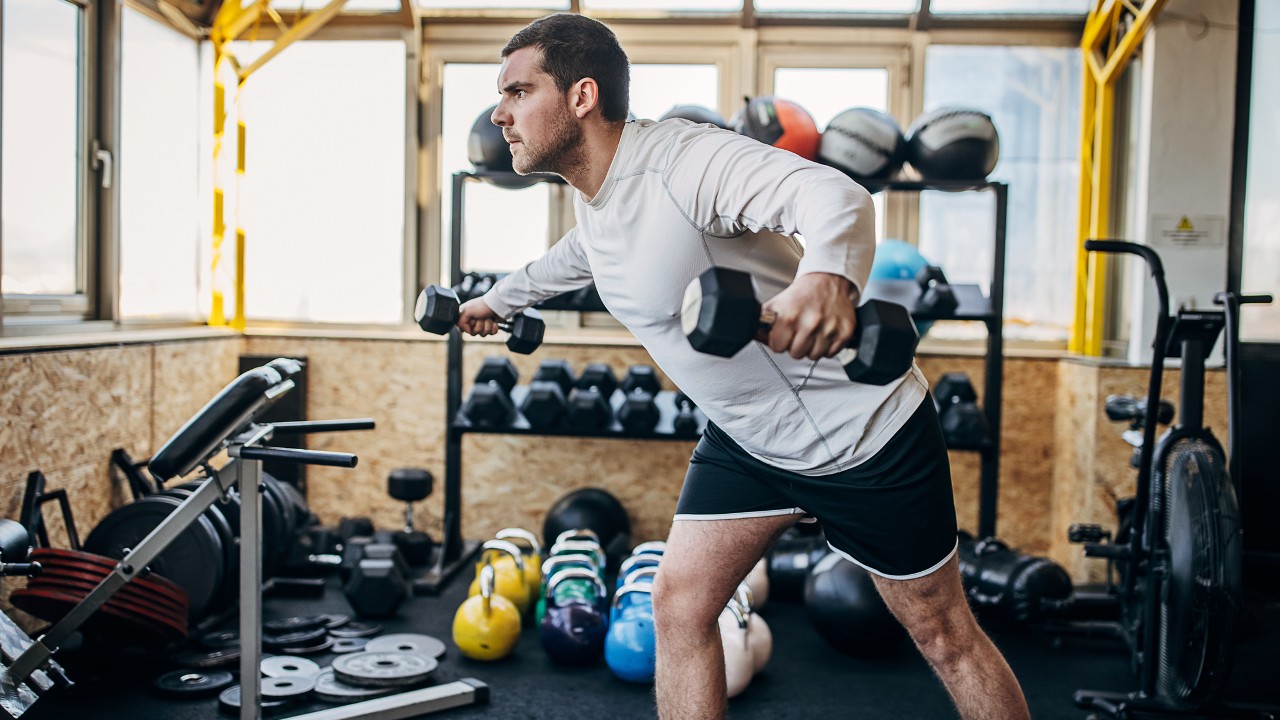
Sets 2 Reps 8 Rest 30sec
Holding a pair of light dumbbells, hinge forwards at your hips so your torso is at 45° to your legs. Keeping your core tight and back flat, raise the weights from shin height out wide until they are level with your shoulders.
2B Lateral raise
Sets 2 Reps 8 Rest 30sec
Stand holding the dumbbells by your sides, palms facing. Keeping your arms straight, raise the weights to the sides until they’re level with your shoulders. Towards the top of the move, tilt the weights forwards to focus the tension on your lateral and rear deltoids.
2C Front raise
Sets 2 Reps 8 Rest 30sec
Stand holding dumbbells in front of your thighs, palms facing you. Keeping your arms straight, raise the weights until level with your shoulders, then lower slowly.
Superset 1
Gill says: “This is the first strength block. Go heavy – around 80-90% of your one-rep max – so that you fail within the 4-6 rep range on the final set.”
3A Dumbbell overhead press
Sets 3 Reps 4-6 Rest 2min
Stand holding dumbbells at shoulder height, palms facing forwards. Tense your core to keep your spine stable, then press the weights overhead until your biceps are beside your ears. Lower slowly. Avoid using your legs to help generate momentum by keeping them straight at all times.
3B Dumbbell incline row
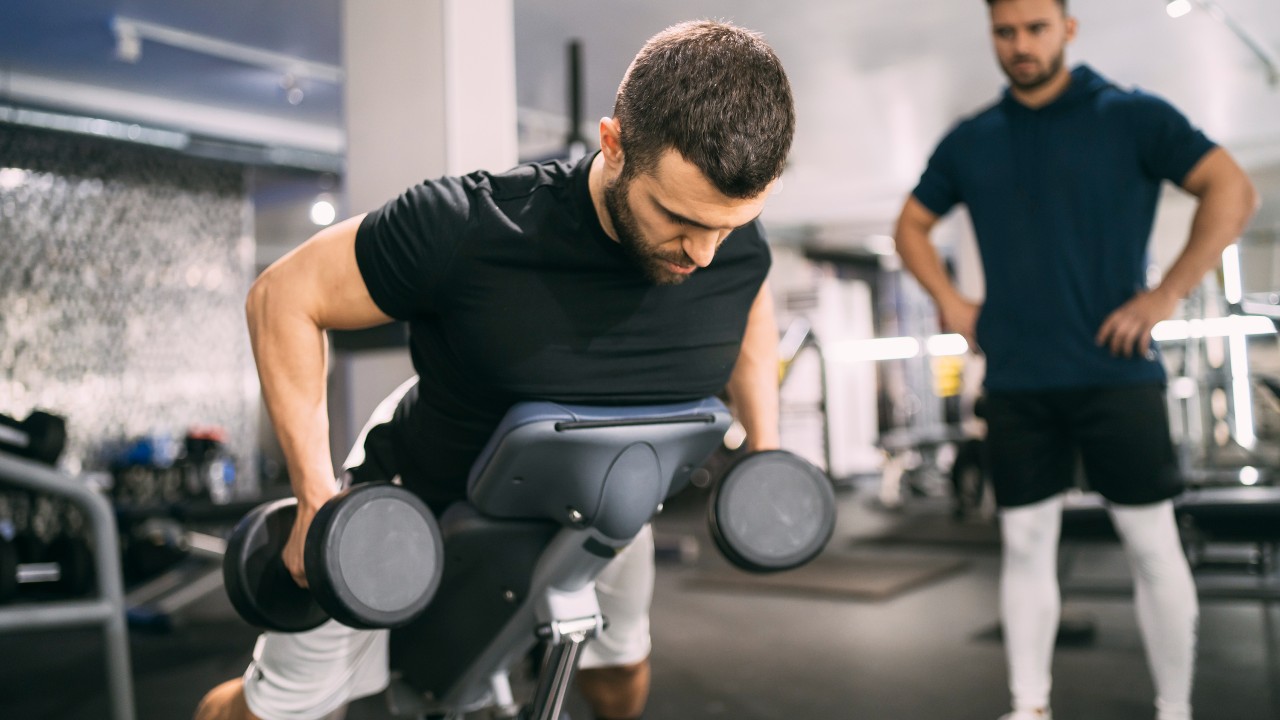
Sets 3 Reps 4-6 Rest 2min
Set a weight bench to 45° and lie chest-down on it holding a pair of dumbbells. Retract your shoulder blades to engage your upper-back muscles, then pull the weights up until level with your chest. Lower under control.
Superset 2
Gill says: “Fatigue will be setting in by now. Use a moderate load for this superset – around 75-85% of your 1RM – aiming to fail within the 6-8 rep range on the final set.”
4A Incline dumbbell press
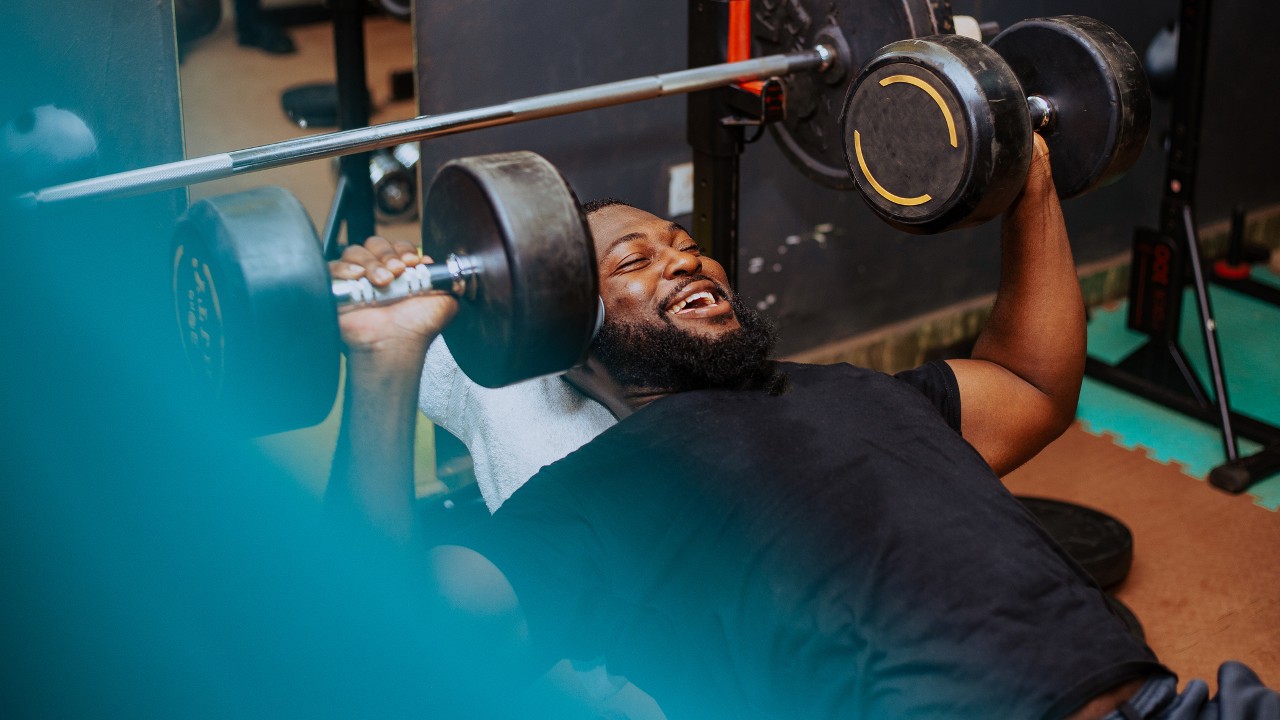
Sets 4 Reps 6-8 Rest 90sec
Using the same weight bench set at 45°, sit down and hold the dumbbells level with your upper chest, palms facing forwards. Plant your feet on the floor for stability, then press the weights straight up. Lower under control.
4B Pull-up/chin-up
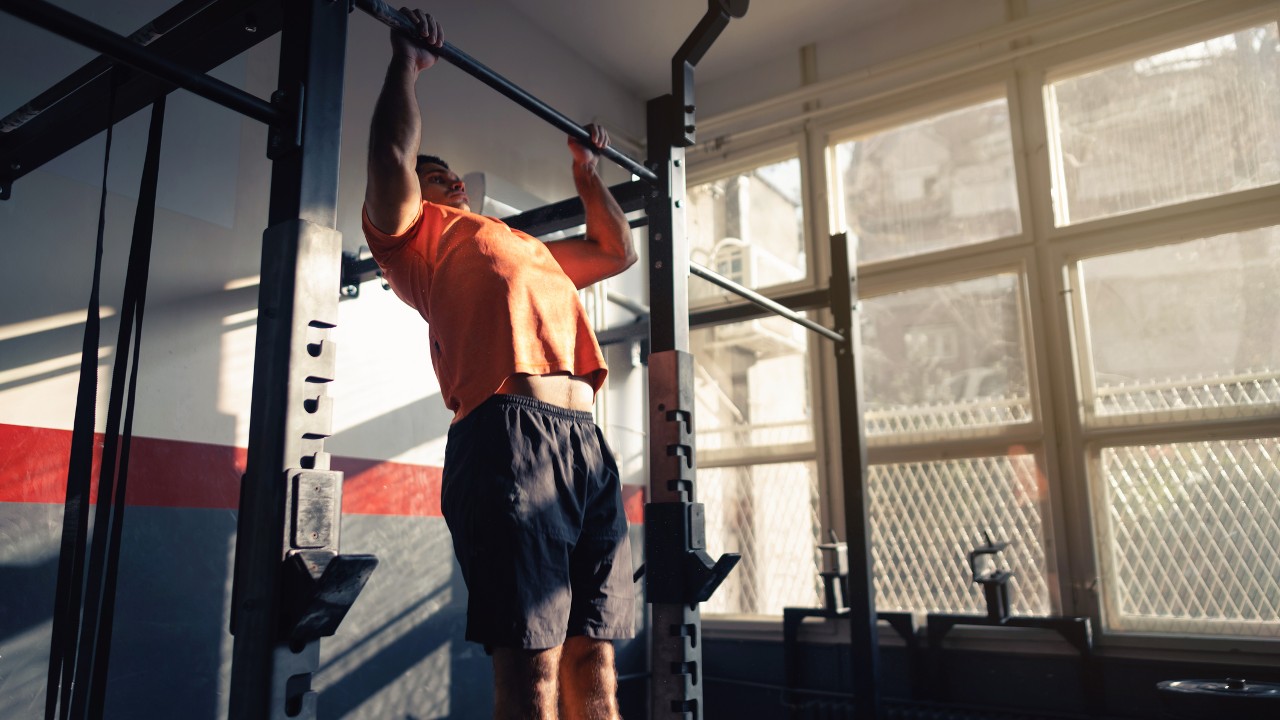
Sets 4 Reps 6-8 Rest 90sec
Pick your poison from the classic chin-up with palms facing you, the pull-up with a wider grip and palms facing forwards, or a neutral chin-up with a narrow grip and palms facing each other. Add weight using a weight belt or weighted vest if you have one available.
5 Dumbbell bench press
Sets 4 Reps 10-12 Rest 60sec
Gill says: “Now we’re shifting to a bodybuilder rep range. Drop the weight down to a lighter load – around 60-70% of your 1RM – and enjoy the pump.”
Lie on a flat weight bench with your feet planted on the floor and weights level with your mid chest. Retract your shoulder blades to engage your upper back muscles, then press the weights straight up, bringing them to gently touch above your chest. Lower under control.
6 Lat pull-down
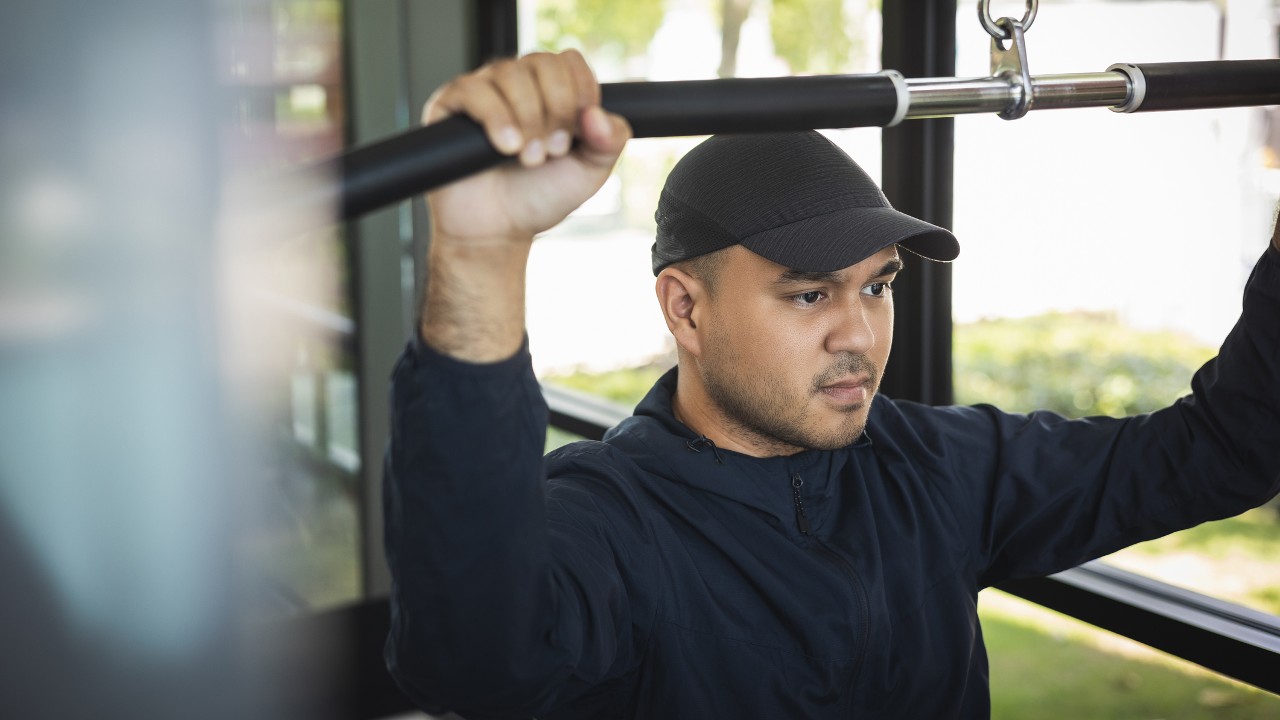
Sets 4 Reps 10-12 Rest 60sec
Adjust the knee pad to keep you stable and grasp the pull-down bar with a wide grip, palms facing forwards. Sit upright and retract your shoulder blades to engage your upper-back muscles, then pull the bar until it is level with your chest. Return to the start position slowly.
Finisher
Gill says: “Rugby players are already well conditioned to handle a simple plank – this variation cranks up the intensity up a few notches. If 60 seconds is too much, break it up into 10-second chunks.”
7 RKC plank
Sets 1 Time 60 sec
Last but certainly not least is this intense isometric finisher. The set-up for the Russian kettlebell challenge (RKC) plank is similar to a regular plank on the forearms, with ankles, knees, hips and shoulders in alignment. The variation comes from creating whole-body tension. Clench your hands together, pull your shoulders in, tense your quads and glutes and squeeze your core – as if trying to crunch your abs. Breathe normally while keeping this tension high throughout.
More Workouts For Rugby Players
- Weights Workout From Women’s Rugby World Cup Winner Vicky Fleetwood
- Get Rugby Fit With This Full-Body Workout
- Rugby Training Lessons From England Rugby
- 6 Rugby Drills For Elite-Level Athleticism

Sam Rider is an experienced freelance journalist, specialising in health, fitness and wellness. For over a decade he's reported on Olympic Games, CrossFit Games and World Cups, and quizzed luminaries of elite sport, nutrition and strength and conditioning. Sam is also a REPS level 3 qualified personal trainer, online coach and founder of Your Daily Fix. Sam is also Coach’s designated reviewer of massage guns and fitness mirrors.
